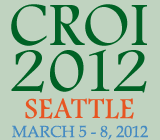As the global campaign against AIDS enters its fourth decade, the development of a broadly preventive HIV vaccine remains among its most vexing challenges.
In his opening remarks at the 19th Conference on Retroviruses and Opportunistic Infections (CROI), held March 5-8 in Seattle, Tufts University virologist John Coffin, the scientific organizer of the event, noted that the failure of previous vaccine candidates had convinced many scientists that antibodies capable of preventing HIV infection could not be elicited through vaccination.
But the 31.2% efficacy demonstrated in the RV144 vaccine trial in Thailand—which, though modest, provided the first evidence of vaccine-induced protection from HIV—has helped lift the gloom from such speculations. Volunteers in that trial who received the prime-boost vaccine combination developed low titers of gp120-binding antibodies that subsequent analyses revealed are correlated with the risk of HIV infection. Separately, a dramatic expansion in the number of broadly neutralizing antibodies (bNAbs) against HIV isolated from volunteers, and the data describing their mechanisms of action, have renewed optimism about the prospects of this vaccine strategy.
“We’re now thinking much more seriously about developing vaccines that might be based on eliciting specific antibodies,” Coffin told the international gathering of more than 4,200 HIV researchers and clinicians.
Reflecting this shift in strategy, CROI organizers selected pioneering antibody researcher Dennis Burton, professor of immunology and microbial science and director of IAVI’s Neutralizing Antibody Center (NAC) at The Scripps Research Institute in La Jolla, California, to kick off the conference. Burton observed that the recent discovery of more than two dozen potent bNAbs by his lab and others, and the elucidation of some of their structural targets on HIV’s Envelope glycoprotein, have revealed weaknesses that can be exploited for both drug and vaccine development. “The tools are all there,” said Burton. “It remains to be seen if immunogen design can take advantage of all these tools.”
But antibodies were far from the only item on CROI’s four-day agenda. The conference also highlighted investigations of the structure of HIV’s Envelope trimer and updates on the continuing analysis of samples collected in the RV144 trial. Other talks of particular interest covered new findings on how a subset of T cells influences antibody development, the evolutionary pathways of HIV and SIV, and the results of several recent studies on ARV-based prevention, which dominated the conference and provoked more than a few animated discussions.
CLICK HERE to read the full article at www.iavireport.org

